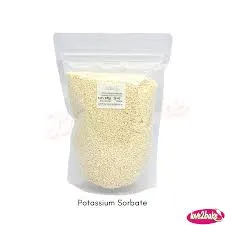
e260 food additive
Understanding E260 A Common Food Additive
In the complex world of food science, additives play a crucial role in enhancing food quality, safety, and shelf life. One such additive that frequently appears on ingredient labels is E260, which is the European food additive code for acetic acid. Acetic acid is a colorless liquid with a distinctive sour taste and pungent smell, commonly known as vinegar when diluted.
The Role of E260 in Food Production
E260 serves multiple functions in the food industry. Primarily, it acts as a preservative due to its ability to inhibit the growth of certain bacteria and fungi. This property is particularly valuable in products like pickles, sauces, and prepared salads, where the risk of spoilage is high. By slowing down microbial activity, E260 helps extend the shelf life of these food items, ensuring they remain safe and palatable for consumers over an extended period.
Beyond preservation, acetic acid is also used as an acidity regulator. This means it can adjust the pH levels of food products, enhancing flavor and stabilizing the overall structure of the food. Foods like salad dressings and marinades often contain E260 to achieve the desired tanginess that is characteristic of these culinary delights.
Sources of E260
e260 food additive

Acetic acid (E260) can be derived from both natural and synthetic sources. Naturally, it is produced during fermentation processes, where yeast and certain bacteria convert carbohydrates into vinegar. This method is commonly used to create various types of vinegar, such as apple cider vinegar and balsamic vinegar. On the other hand, synthetic acetic acid is produced through chemical processes in industrial settings, making it a cost-effective option for large-scale food production.
Safety and Regulatory Status
The use of E260 is regulated by food safety authorities worldwide. In the European Union, acetic acid is approved for use in food products, and it is deemed safe for consumption within specified limits. The acceptable daily intake (ADI) of acetic acid is well-documented, reassuring consumers of its safety when utilized appropriately in food preparation.
While E260 is generally regarded as safe, individuals with specific dietary concerns should remain mindful of its presence in food products. For instance, those with vinegar allergies or sensitivities may need to avoid foods containing E260 to prevent adverse reactions. Additionally, excessive consumption of acidic foods can lead to dental erosion and digestive discomfort, so moderation is key.
Conclusion
E260, or acetic acid, is an essential food additive with significant functional benefits. From preserving food to enhancing flavor, its versatility makes it a staple in modern food production. While it is deemed safe for most consumers, awareness of its presence in various food items is crucial for those with specific dietary concerns. As we continue to navigate the intricacies of food labeling and additives, understanding the role and safety of ingredients like E260 helps consumers make informed choices about the foods they eat.
-
Understanding Synthetic Rubber OptionsNewsApr.27,2025
-
Trichloroisocyanuric Acid: Essential for Clean and Safe WaterNewsApr.27,2025
-
Sodium Dichloroisocyanurate: Key to Safe Water TreatmentNewsApr.27,2025
-
Sodium Acid Pyrophosphate: Essential in Modern Food ProcessingNewsApr.27,2025
-
Essential Water Treatment ChemicalsNewsApr.27,2025
-
Denatured Alcohol and Its Industrial UsesNewsApr.27,2025
-
The Versatile Uses of Sodium BicarbonateNewsApr.24,2025
Hebei Tenger Chemical Technology Co., Ltd. focuses on the chemical industry and is committed to the export service of chemical raw materials.
-

view more DiethanolisopropanolamineIn the ever-growing field of chemical solutions, diethanolisopropanolamine (DEIPA) stands out as a versatile and important compound. Due to its unique chemical structure and properties, DEIPA is of interest to various industries including construction, personal care, and agriculture. -

view more TriisopropanolamineTriisopropanolamine (TIPA) alkanol amine substance, is a kind of alcohol amine compound with amino and alcohol hydroxyl, and because of its molecules contains both amino and hydroxyl. -

view more Tetramethyl Thiuram DisulfideTetramethyl thiuram disulfide, also known as TMTD, is a white to light-yellow powder with a distinct sulfur-like odor. It is soluble in organic solvents such as benzene, acetone, and ethyl acetate, making it highly versatile for use in different formulations. TMTD is known for its excellent vulcanization acceleration properties, which makes it a key ingredient in the production of rubber products. Additionally, it acts as an effective fungicide and bactericide, making it valuable in agricultural applications. Its high purity and stability ensure consistent performance, making it a preferred choice for manufacturers across various industries.











